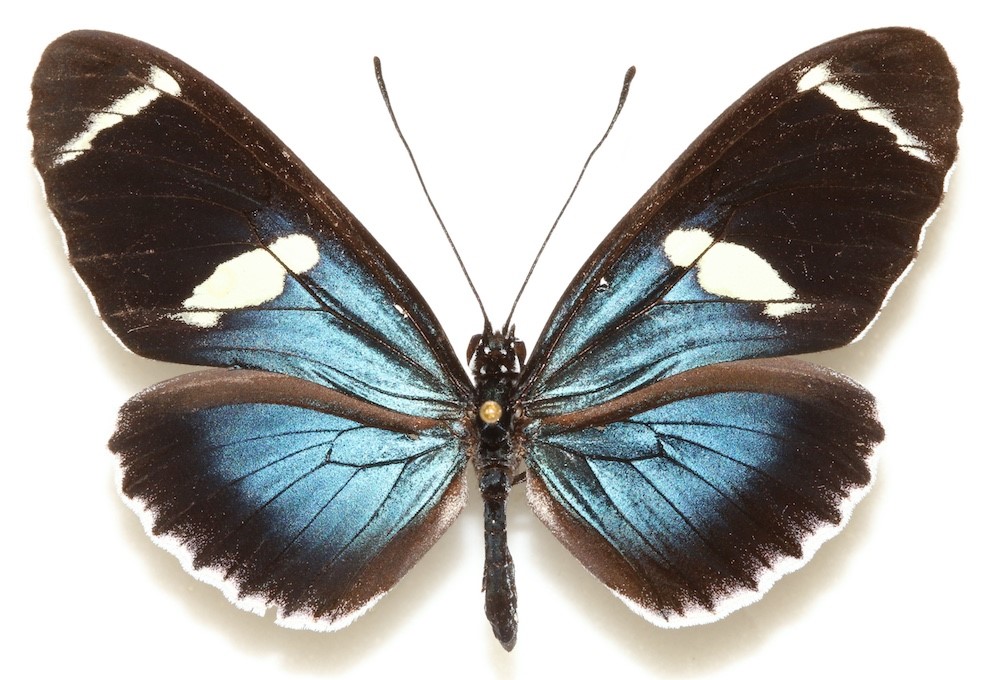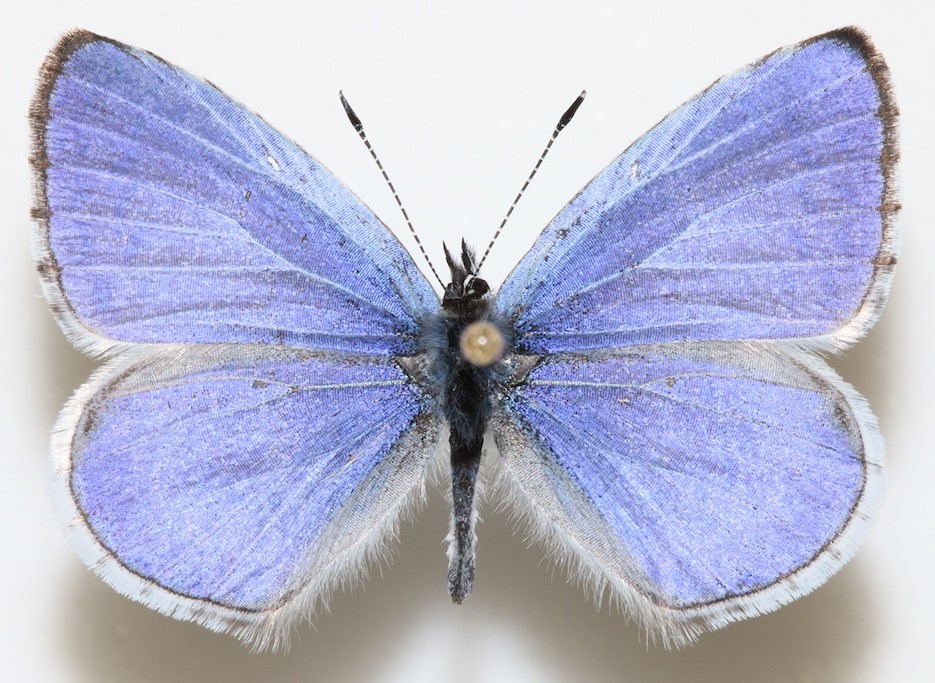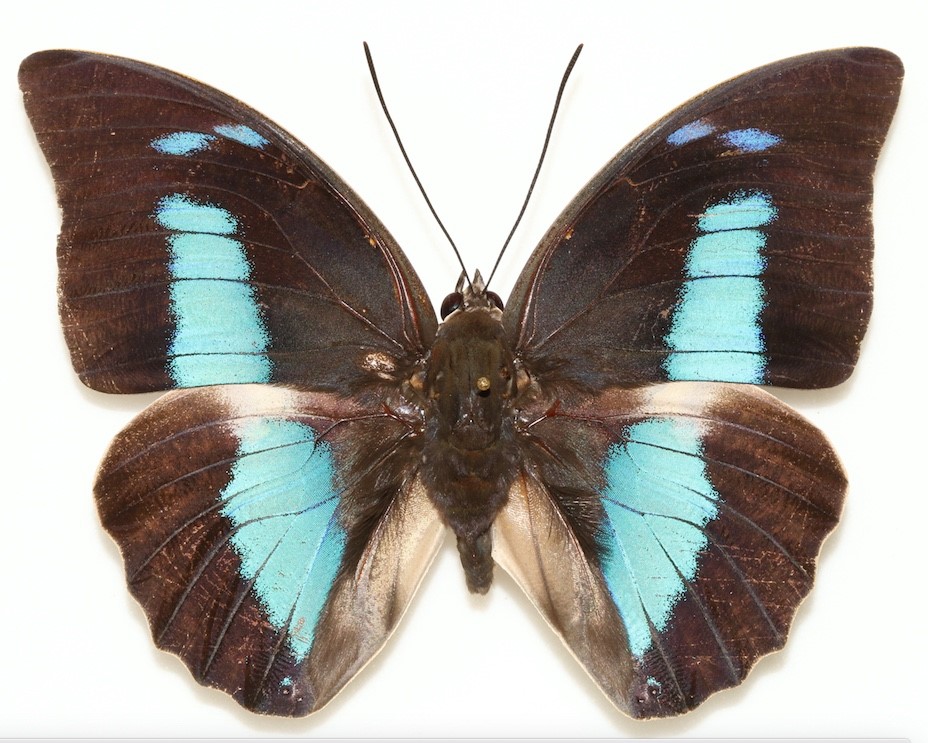A butterfly’s wings are more than just eye-catching flight gear. A new study reveals microscopic structures that give butterflies their vibrant colors can also play a vital role in how butterflies adapt to extreme climates.
Like shingles on a roof, these microstructures interlock to trap and release heat. Researchers found that butterflies from warmer climates tended to release heat more rapidly, while more cold-adapted butterflies seemed to hold onto it. This study could provide the “missing link” in scientists’ understanding of how butterflies survive in habitats such as deserts or the Arctic, said lead author Anirudh Krishna of the University of California Irvine’s Nano Thermal Energy Research Lab.

Florida Museum photo by Andrew Warren
Andrew Warren, study co-author and senior collection manager of the Florida Museum McGuire Center for Lepidoptera and Biodiversity, said, “Given the incredible diversity of tropical butterflies, many of which fly in very hot conditions, I’ve always speculated that they must have some ‘secret’ way of keeping cool during flight. It’s exciting to learn that it’s their wing microstructures enabling them to do so.”
The heat absorbing, light-scattering properties of butterfly wings have been well studied within the visible light spectrum, but until now researchers have been largely in the dark on the details of how butterfly wings interact with invisible wavelengths. Invisible infrared wavelengths are responsible for thermal emissions into a butterfly’s environment, and the microstructures on a butterfly’s wings contribute to how much of this infrared energy will be absorbed or reflected.

Florida Museum photo by Andrew Warren
“The beautiful colors of butterflies attract us all,” said Jaeho Lee, study co-author and UCI assistant professor of mechanical and aerospace engineering. “To our surprise, the interesting properties were hidden in the invisible infrared wavelengths.”
Researchers used a scanning electron microscope to map the texture of the butterflies’ wings, putting the complex shapes responsible for the trapping and releasing of heat into bold relief. Krishna and his team analyzed how much heat four different species of butterflies released to their surroundings using thermal imaging. They found that the one-spotted prepona, Archaeoprepona demophon, and the Sara longwing, Heliconius sara, released nearly two times more thermal energy from their wings than the two butterflies from cooler climates – the western azure butterfly, Celastrina echo, and Florida’s red-spotted purple, Limenitis arthemis.
In flight, butterflies typically maintain an internal temperature of between 68 and 122 degrees Fahrenheit. But temperatures outside this range come with grave consequences – a slow or overheated butterfly is an easy catch for a watchful predator. Microstructures help butterflies thermoregulate, or maintain a constant body temperature through heat absorption and release, allowing them to withstand extreme climates.
But butterflies also have more direct ways to maintain their internal temperature in a pinch. On chilly days, a butterfly might fly in short, rapid bursts to avoid losing heat too quickly. If that doesn’t do the trick, butterflies can “shiver” to warm themselves. On hot days, a butterfly might find a shady resting spot and fold its wings to avoid absorbing too much heat.

Florida Museum photo by Andrew Warren
“What excites me about our findings is how it is going to open new doors to our understanding of how organisms across the animal kingdom will cope with the higher temperatures we’re seeing with global warming,” said Adriana Briscoe, a professor of ecology and evolutionary biology in UCI’s School of Biological Sciences and one of the study’s co-authors.
Understanding these microstructures can also better inform our own building construction techniques, Warren added.
“A lot can be learned from the detailed understanding of how butterflies keep their cool,” he said. “The natural, biological microstructures on the butterflies’ wings are an ideal template for designing and engineering man-made microstructures that can control light and heat. By imitating and perfecting the millennia-old adaptations of the butterflies, we can have the opportunity to make giant strides in optical control and thermoregulation.”
“We’re planning to continue our interdisciplinary collaborative studies on butterfly wings, and I’m especially excited to learn about the modifications of wing microstructures in arctic species in order to minimize heat loss,” Warren added.
This study was published in the Proceedings of the National Academy of Sciences.
Xiao Nie from UCI and Jorge Llorente-Bousquets from the Universidad Nacional Autónoma de México also co-authored the study.
The research was funded by the National Science Foundation, the UCI Samueli School of Engineering and the Hellman Fellows Fund.
Editor’s note: This press release was adapted from this piece by UCI.
Sources: Anirudh Krishna, akbharad@uci.edu;
Andrew D. Warren, awarren@flmnh.ufl.edu, 352-273-2015;
Jaeho Lee, jaeholee@uci.edu;
Adriana Briscoe, abriscoe@uci.edu, 949-824-1118